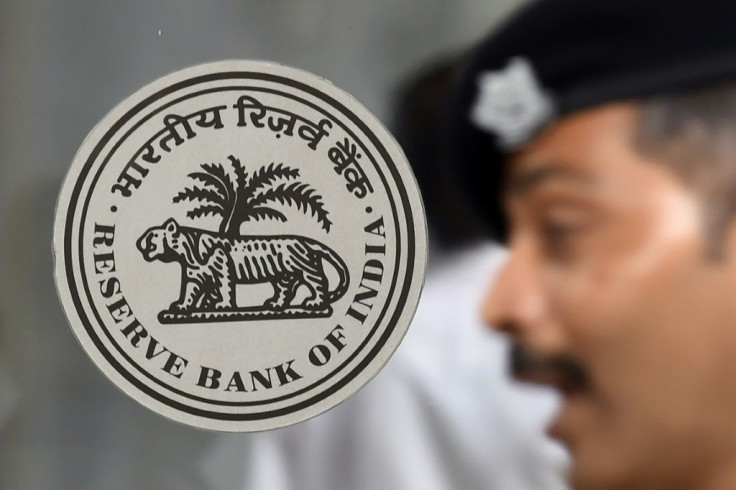India’s Central Bank Makes Surprise Emergency Interest Rate Cut As It Projects GDP Contraction

KEY POINTS
- India’s central bank cut its benchmark repurchase (repo) rate to 4% from 4.4%
- RBI, also reduced the reverse repo rate to 3.35% from 3.75%.
- India has now slashed the repo rate by 115 basis points since the covid-19 crisis began
India’s central bank unexpectedly cut its benchmark repurchase (repo) rate to 4% from 4.4% following an emergency meeting on Friday to fight off the “severe” impact of the coronavirus pandemic on the economy.
(The repo rate defines the rate at which banks borrow from the central bank.)
The benchmark rate is now at its lowest level in two decades.
This Monetary Policy Committee, or MPC, of the Reserve Bank of India, or RBI, also reduced the reverse repo rate to 3.35% from 3.75%.
(The reverse repo rate is the rate that banks get for keeping funds with the RBI)
Friday’s actions marked the second time since March -- at the beginning of the covid-19 crisis -- that the RBI has cut rates.
India has now slashed the repo rate by 115 basis points since the crisis began.
The MPC also said it will continue with its accommodative policies “as long as it is necessary to revive growth and mitigate the impact of covid-19 on the economy, while ensuring that inflation remains within the target.”
The MPC noted that the economic impact of the pandemic has turned out to be worse than initially expected, imposing severe stress on various parts of the Indian economy.
The committee noted that largely due to the government-ordered nationwide lockdown and social distancing measures, economic activity will likely remain subdued in the second quarter.
“Recovery in economic activity is expected to begin in [the third quarter] and gain momentum in [the fourth quarter] as supply lines are gradually restored to normalcy and demand gradually revives,” the MPC added.
Analysts generally welcomed the lower rates.
"Today’s repo rate cut will further help banks to lower home loan interest rates, which may get several more fence-sitters onto the market,” said Anuj Puri, chairman of Anarock Property Consultants, a real estate services firm. “Moreover, the repo rate cut may compel banks to reduce the interest rates for [fixed deposits] even further -- this could result in even more people leaning towards housing as a better investment option."
Saugata Bhattacharya, chief economist at Axis Bank of Mumbai, said the rate cuts made sense, citing that now lending rates will come down for banks and ease cashflow woes at struggling businesses.
But Bhattacharya cautioned the RBI is unlikely to cut rates any further.
Rahul Bajoria, chief India economist at Barclays, said the MPC were “nimble and calibrated” in their response to economic data. The central bank, he said, is aware that it takes two to three quarters for rate cuts to filter down into the real economy – hence the RBI is likely signaling for a longer-term recovery.
Jayesh Mehta, country treasurer at Bank of America, called the rate cuts “surprisingly positive,” since markets were not anticipating a reduction.
But some observers cautioned a rate cut may not be enough to quell economic anxieties.
“The reduction in interest rates are a great relief, but a new phenomenon is visible, said Deepak Sood, secretary-general of the Associated Chambers of Commerce and Industry of India. “Along with the risk aversion by the banks to lend, even the borrowers are apprehensive about increasing debts on their balance sheets in the face of a grave economic situation. The downside risks to the economy are getting sharper... Under such circumstances, restructuring of debts on a wider scale and a willingness to share the grave consequences of the global pandemic are essential."
RBI Governor Shaktikanta Das warned that India’s real gross domestic product growth would be negative in fiscal 2021 (ending in March), although the MPC declined to provide a specific projection.
Goldman Sachs expects the Indian economy to shrink by 5% in real terms, the first annual contraction in almost 40 years.
Das also said the outlook for inflation remained uncertain and did not provide a specific projection, but he noted that headline inflation should ease in the second half of the year.
"Supply shock to food prices in April may show persistence over the next few months depending on [the] lockdown and [the] time it takes to restore supply chains after relaxation [of the lockdown]," he said.
The MPC stated: “With the inflation outlook remaining benign as lockdown-related supply disruptions are mended, the policy space to address growth concerns needs to be used now rather than later to support the economy, even while maintaining headroom to back up the revival of activity when it takes hold.”
RBI has also extended its moratorium on loan repayments for three months to help relieve financial pressures on businesses pressured by the lockdown.
The central bank will also increase the proportion of loans that banks can provide to a corporation to 30% of its net worth, up from 25%.
However, Jaikishan Parmar, an analyst at Mumbai-based Angel Broking Ltd., does not think these measures will increase lending by banks.
Indian banks are already burdened by one of the world’s highest percentage of bad loans – at 9.3%. McKinsey & Co. estimates that figure could jump by another 7% in the wake of the pandemic.
Meanwhile, India’s economy is in shambles.
Consumption and demand have collapsed, while services industries have skidded to a halt.
Some 122 million people in the private sector lost their jobs in April, most of them daily wage earners.
© Copyright IBTimes 2025. All rights reserved.





















